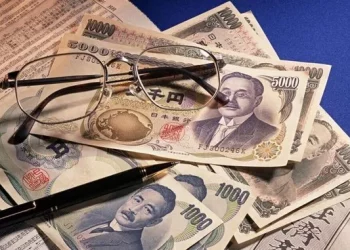The Japanese 5 yen coin, known as “go-en” in Japanese, is more than just a piece of currency. It holds significant cultural, historical, and symbolic value in Japan. This article delves into the origins, design, cultural significance, and the role of the 5 yen coin in modern Japan, offering a comprehensive look at this small but mighty coin.
Historical Background
Origins of the Japanese Yen
The yen (¥) was introduced in 1871 as part of the Meiji government’s modernization efforts. Before the yen, Japan used a complex system of currency that included gold, silver, and copper coins, as well as paper money. The yen was introduced to simplify and standardize the monetary system, aligning it with Western economies.
Introduction of the 5 Yen Coin
The 5 yen coin was first minted in 1870, predating the yen’s official introduction by a year. Initially, it was a gold coin, but due to economic changes and the need for a more practical medium of exchange, the gold 5 yen coin was discontinued in 1897. The modern brass 5 yen coin, which we are familiar with today, was introduced in 1948, during the post-World War II era when Japan was rebuilding its economy and infrastructure.
Design and Features
Material and Composition
The current 5 yen coin is made of brass, an alloy consisting of 60-70% copper and 30-40% zinc. This composition gives the coin its distinctive golden color and durability. The choice of brass was practical, as it was affordable and resistant to corrosion.
Physical Characteristics
The 5 yen coin is unique in its design, featuring a central hole, which makes it easily distinguishable by touch alone. The coin has a diameter of 22 millimeters, a thickness of 1.5 millimeters, and weighs 3.75 grams. The central hole, apart from its practical uses in ancient times for stringing coins together, also holds symbolic significance.
Obverse Design
The obverse side of the coin features an ear of rice, symbolizing agriculture, which has been the backbone of Japan’s economy for centuries. Surrounding the rice are the words Nippon koku, meaning “State of Japan,” and the year of minting, written in kanji.
Reverse Design
The reverse side of the coin showcases a gear wheel, representing industry, and waves, symbolizing fisheries. These elements together highlight the three main sectors of Japan’s economy: agriculture, industry, and fisheries. The hole in the center is surrounded by these motifs, tying them together in a unified design.
Cultural Significance
Symbolism of the 5 Yen Coin
The 5 yen coin is deeply embedded in Japanese culture, largely due to its phonetic resemblance to the word “go-en” (ご縁), which means “good fortune” or “destiny.” This has made the 5 yen coin a popular symbol of luck and prosperity.
Usage in Religious and Ceremonial Practices
In Shinto shrines and Buddhist temples across Japan, the 5 yen coin is commonly used as an offering. When making a wish or prayer, people often throw a 5 yen coin into the offering box, believing that the coin’s symbolic value will bring good fortune. This practice underscores the deep cultural connection between the coin and the concept of good luck.
The 5 Yen Coin in Everyday Life
Beyond its ceremonial use, the 5 yen coin is a staple in everyday transactions. Despite the increasing use of digital payments, cash remains an essential part of Japanese commerce, and the 5 yen coin continues to circulate widely. Its unique design makes it easy to identify, even among a handful of other coins.
The 5 Yen Coin in Numismatics
Collectibility and Value
For numismatists, the 5 yen coin holds considerable interest due to its historical evolution and cultural significance. While the coin itself has a low face value, certain mint years and rare variations can be of higher value to collectors. For instance, coins minted in years of lower production or with unique design features can fetch a premium price in the collector’s market.
Variations and Mint Marks
Over the years, the 5 yen coin has seen several design variations and changes in mint marks. Early versions from the late 19th and early 20th centuries are particularly sought after by collectors. Additionally, coins with minting errors or those produced during significant historical periods also attract interest.
The Role of the 5 Yen Coin in Modern Japan
Economic Function
In modern Japan, the 5 yen coin remains an essential part of the currency system. It is widely used for everyday purchases, vending machines, and public transportation. Despite its small value, the coin’s durability and ease of use ensure its continued circulation.
See Also: How Much Does a 1 Yen Coin Cost to Make?
Technological Integration
As Japan moves towards a more digital economy, there are efforts to integrate traditional currency with modern technology. For instance, some vending machines and automated systems still accept coins, including the 5 yen, ensuring that they remain relevant in a rapidly evolving economic landscape.
Preservation of Tradition
While digital payments are becoming more prevalent, the 5 yen coin symbolizes Japan’s respect for tradition and continuity. Its continued use reflects a balance between modernity and tradition, a hallmark of Japanese society.
Global Perception and Influence
The 5 Yen Coin as a Cultural Ambassador
The 5 yen coin serves as a cultural ambassador for Japan. Tourists often keep the coin as a souvenir, fascinated by its unique design and cultural significance. This small piece of currency provides a tangible connection to Japan’s rich history and cultural heritage.
International Numismatic Community
In the global numismatic community, the 5 yen coin is recognized for its distinctive features and cultural importance. Collectors around the world appreciate the coin for its aesthetic value and the story it tells about Japan’s economic and cultural evolution.
The Future of the 5 Yen Coin
Challenges and Opportunities
The 5 yen coin, like all physical currency, faces challenges in an increasingly digital world. However, its deep cultural roots and practical design ensure that it will remain a part of Japan’s monetary system for the foreseeable future. Efforts to preserve and promote the coin’s use can help maintain its relevance.
Technological Advancements
Future technological advancements may further integrate the 5 yen coin into Japan’s digital economy. Innovations such as contactless payment systems and digital wallets can be designed to complement traditional currency, ensuring that the 5 yen coin continues to play a role in daily transactions.
Educational Value
The 5 yen coin also serves as an educational tool, teaching new generations about Japan’s history, economy, and culture. Its unique design and symbolic meanings provide a tangible way to connect with the past and understand the evolution of Japanese society.
Conclusion:
The Japanese 5 yen coin is much more than a mere piece of currency. Its rich history, unique design, and deep cultural significance make it a fascinating subject for study and appreciation. From its origins in the Meiji era to its role in modern Japan, the 5 yen coin has remained a constant symbol of good fortune, economic resilience, and cultural heritage. As Japan continues to evolve, the 5 yen coin stands as a testament to the country’s ability to balance tradition with innovation, making it a timeless icon in both numismatic circles and everyday life.
In conclusion, the Japanese 5 yen coin is a small but powerful emblem of Japan’s history, culture, and economic prowess. Its continued use and significance in Japanese society highlight the enduring importance of tradition and symbolism in a rapidly changing world. Whether used in daily transactions or as a token of good luck, the 5 yen coin remains a cherished and integral part of Japan’s national identity.
Related Topics:


























